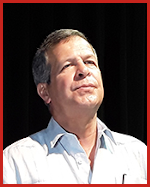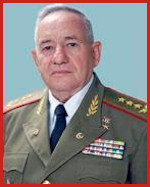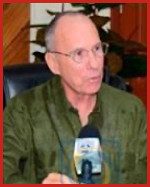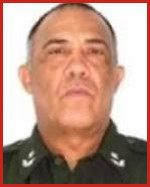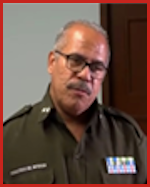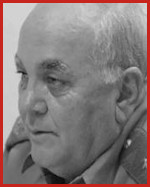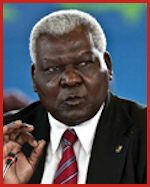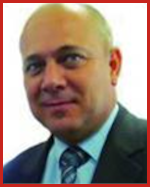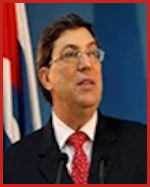THE INNER CIRCLE OF POWER
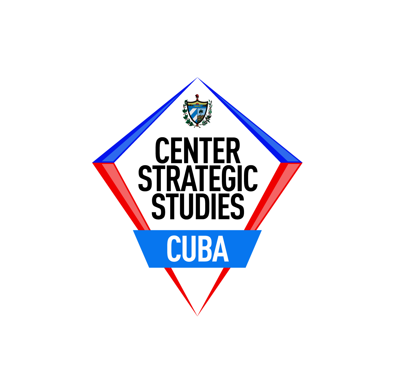
THE MILITARY INNER CIRCLE OF POWER (2023) by Pedro V. Roig, Historian and Janisset Rivero, M.A.
Lacking the theatrical skills of Fidel Castro, but being a precise and methodological manager, Raúl Castro with the close input of retiring “Comandantes” Machado Ventura and Ramiro Valdés, among others, hand –picked the military inner circle of power.
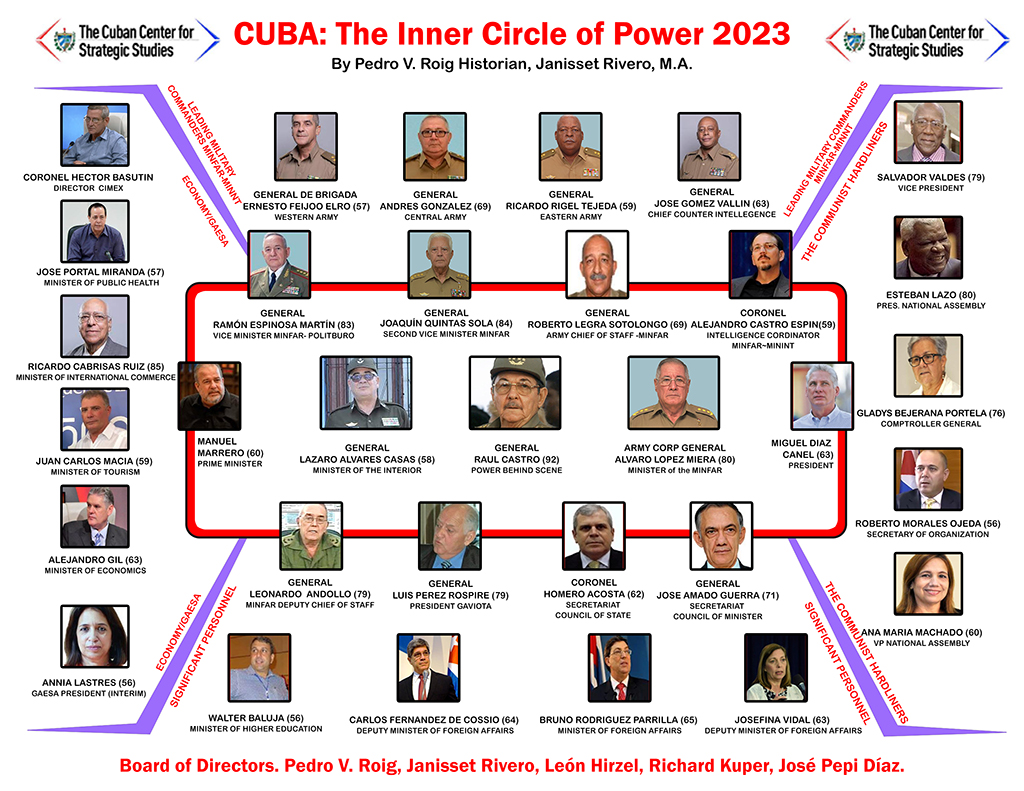
CUBA: THE FAILED COMMUNIST REVOLUTION
In January 1959, Cuba entered the road of a catastrophic Revolution. That year, the Rebel Army led by Fidel Castro, a charismatic leader, took control of the government and Cuba became a nation at war. The enemy was the Cuban bourgeoisie, private property, individual freedom, and the U.S. capitalist democracy.
In October 1959, Raul Castro was appointed Minister of the Revolutionary Armed Forces (MINFAR). From its inception, the new army was structurally integrated on a rigid hierarchical order, based on two fundamental requirements: loyalty and obedience to Fidel Castro.

MININT Headquarters
MININT: A VICIOUSLY REPRESSIVE FORCE
Using the Soviet model, a repressive security force was created under the Ministry of the Interior (MININT). The officers were trained by the East German Stassi and the Soviet KGB. The MININT developed into an effective and brutal repressive force and included several units of well-trained elite battalions. The Minister of the Interior became a powerful member of Castro’s Inner Circle of Power.
To enforce obedience, MININT controls the Committee for the Defense of the Revolution (CDR), a paramilitary force actively present on every block of every city on the island. Not even the Soviets were capable of reaching this degree of vigilance and fear at the street level.
In essence, Cuba has been from 1959 to the present (2023), a viciously repressive military regimen. For scholar Mark Falcof: “Castro’s power rests principally upon the loyalty and commitment of an officer’s class” (1). In the words of Raul Castro the army is: “The vanguard of the state “(2). Irving Louis Horowitz, Professor Emeritus at Rutgers University, wrote on the issue of military rule: “The militarization of Cuba is the consequence of the inner history of the Cuban revolution; the personnel which made up the regime at the outset and continues to rule, have been military”(3).Vigilance, desinformation and terror are the essence of MININT.
GAESA: A FINANCIAL CONSORTIUM THAT DOMINATES THE ECONOMY
The third organization of command and financial control is the “Grupo de Administración Empresarial GAESA”. A super enterprising corporate consortium that dominates over 80% of Cuba’s economy and is totally mastered by Armed Forces Officers. It controls tourism, financial investments, import/export and the remittance sectors of the Cuban economy.
GAESA does not disclose financial information. This is top-secret. Only Raul Castro and members of the Inner Circle of Power have access to GAESA financial data. The supra- corporation employed over 25 thousand (former military personnel) and manages every money generating operation in Cuba, including the gigantic financial enterprises GAVIOTA and CIMEX.
GAVIOTA controls the profitable tourist industry including hotel chains with over 40 K rooms throughout the island in partnership with several international hotel corporations, Spain’s Melia, Sheraton’s Starwood, the Swiss based Kempinski, and all the marinas and tourist car rentals. CIMEX operates over 2800 retail outlets, including the 1100, Panamericana stores, gas stations, fast food cafeterias and hundreds of commercial enterprises in Cuba and around the world.
LUIS ALBERTO RODRIGUEZ LOPEZ-CALLEJAS’ DEATH, GAESA’S PRESIDENT
GAESA’s President, División General Luis Alberto Rodriguez Lopez–Callejas, died suddenly on July 1, 2022. This was a devastating blow to the supreme authority in the transition process of the younger generation to control government power.
During 1990’s Rodriguez Lopez-Calleja married Deborah Castro Espin, Raul Castro’s eldest daughter. They had two children: Vilma Rodriguez Castro and Raul Guillermo Rodriguez Castro. Raul Guillermo is in charge of the personal protection of his grandfather Raul Castro. He is a Lieutenant Colonel of the Armed Forces.
For Raul Castro, the power transition was a top priority issue. He worked dutifully with his closest advisors including General Julio Casas Regueiro, who was his son in law tutor for over 20 years on management and financial expertise.
The death of Rodriguez Lopez-Callejas, the heir apparent to the Cuban government, created a succession power vacuum. For the first time in 63 years, the communist regime does not have a charismatic leader (Fidel) or a consensual stewardship (Raul). The death of the anointed successor could be the beginning of a divisiveness issue in the power transition process, among the incoming officers generation. A troublesome challenge.
THE COMMUNIST PARTY
In Castro’s Cuba the Communist Party was established to manage the huge bureaucracy (over 80% of the working age people are employed by the marxist system), and to operate the Committees For the Defense of the Revolution,(CDR) under the watchful eyes of MININT. During over 60 years of nepotism, the Party has evolved into a highly corrupted bureaucracy, running their jobs as a disguised family business.
NO CONSTITUTIONAL LIMITS TO MILITARY POWER
MINFAR and MININT authority is not limited by any laws, not bound by any rules. During the guerrilla fighting in Cuba and the African military campaign, (in essence two generations), they forged a powerful bond of loyalties integrated into a privileged military class protecting their political, financial and social elite status. Their families enjoy a “socialist aristocratic” quality of life.
MINFAR is composed of the Western, Central and Eastern armies, the “Tropas Especiales”, and Air Force and Navy. They command Cuba’s vital strategic regions. MININT controls among others services, the Intelligence and the repressive Counterintelligence Services, and the National Revolutionary Police. .
In the summer of 2023, MINFAR Minister, General Alvaro Lopez Miera and MININT Minister, General Lazaro Alvarez Casas became the principal authorities in Cuba (with the input of semi-retired General Raul Castro). The other members of the Inner Circle of Power (ICP) are Generals Ramon Espinosa, Joaquin Quintas Sola, Roberto Legra Sotolongo, Leonardo Andollo, Luis Perez Rospide, José Guerra, and Colonels Alejandro Castro and Homero Acosta.
President Miguel Diaz Canel is the Chief of State (Article 125) and his duties are essentially ceremonial, but in fact, Prime Minister Manuel Marrero (he was tutored in management by general Julio Casas) is the Head of the Cuban government (Article 122). Both Diaz Canel and Marrero are relevant members of the (ICP) with the task of creating a perception of institutional legitimacy.
The Cuba Center for Strategic Studies (CCSS) Goals
The CCSS is a Cuban American research and think tank institution in the area of Cuba’s political-military issues based in Miami, Florida, U.S.A., which focuses on the understanding of historical successes and failures in order to apply strategic thought to the problems of the future. To achieve these goals, we are guided by a distinct set of values, independent ideas, cultural diversity, integrity and realistic analysis, embedded in a solid creed of freedom and the rule of law for Cuba.
The initial board of trustees, chaired by Pedro V. Roig, Esq. is composed of highly distinguished and accomplished individuals who provide overall direction and leadership to CCSS. They bring the professional, political and cultural perspective of three generations of Cubans and Cuban Americans at a time of great historical development on the island. Janisset Rivero, MA, Leon Hirzel, Esq, Richard Kuper, Esq. and José “Pepi” Díaz, Esq. who have dedicated their allegiance to solve complex issues of human rights and justice.
The Cuban Center for Strategic Studies arises from the urgent need to collect and update information on the political, social and economic situation in Cuba. This need has become crucial after the massive protests led by the Cuban people as of July 11, 2021. The protests took place in a disadvantageous political framework for the regime.
The military elite that rules Cuba has remained in power for 62 years thanks to various factors: coercion, brutal repression, the participation of the regime in drug trafficking and other illicit activities in the international arena, the use of propaganda and disinformation inside and outside the Island, and the concentration of economic power in the hands of an illegal military oligarchy that controls the destiny of the country in a totalitarian way.
However, this massive response from the people in their clamor for freedom took everyone by surprise. The security forces failed to foresee the dimension of the rebellion. The world was able to witness first-hand the struggle Cubans are waging in the face of the fierce repression of the military that controls power.
Who are they? How is their militaristic regime structured? Is the power they wield legitimate?
In this methodical research and thoughtful analysis, CCSS addresses these issues, offering the names and military ranks of those who hold power in Cuba and the corrupted economic and political structure which sustains them.
FIDEL & RAÚL CASTRO’S LEGACY OF A MILITARISTIC STATE
The MINFAR–MININT and GAESA are the dominant forces in Cuba. They have a supra-constitutional dominion of government. They are not limited by any laws, nor bound by any rules.
From the Sierra Maestra, Fidel Castro knew his political power rested on the loyalty and control of the Army and a repressive security force. Under his intolerant leadership, there was no room for freedom of speech and dissent. Immediately, Castro began the process of glorification of the revolutionary Armed Forces as the sacred authority of the State.
They have evolved into a tightly-knit upper class, protecting their privileges. In 1965, Castro established the Communist Party as an obedient bureaucracy controlled by the military.
They are integrated into a rigid military oligarchy1. For scholar Mark Falcoff, Castro’s power “rests principally upon the loyalty and commitment of an officer class”.2
Irving Louis Horowitz, Professor Emeritus at Rutgers University, wrote on the issue of the military rule: “The militarization of Cuba is a consequence of the inner history of the Cuban Revolution; the personnel which made up the regime at the outset and continues rule, has been military”.3
THE DIFFERENT ROLE OF THE COMMUNIST PARTY IN THE SOVIET UNION AND CUBA
The Soviet and Cuban historiography offers profound differences between the roles of the Communist Party in both historical processes. In 1917, Lenin led and established the Communist Party as the center of power. In Cuba, Fidel Castro’s control of the revolution rested in the Rebel Army. Álvaro Alba, journalist and expert in Russian culture and political history, clearly points out the different roles of the Communist Party in the Soviet and the Cuban revolutions. Alba stated: “unlike the cases of Eastern Europe or the Soviet Union, in Cuba military power created political power, sustained it, substituted for it or eliminated it, as needed”.4 In Castro‘s Cuba, the Communist Party was in charge of administering the State’s bureaucracy. As Alba notes: “The Communist Party was created by the governing elite in the mid-1960’s…becoming to a great extent, the political instrument of the military”.5
A HISTORICAL TURNING POINT
The people’s protests of July 11th, 2021 were a massive rebellion of the Cuban youth heartened thru the internet in a patriotic demand for “freedom and change” (libertad y cambio).
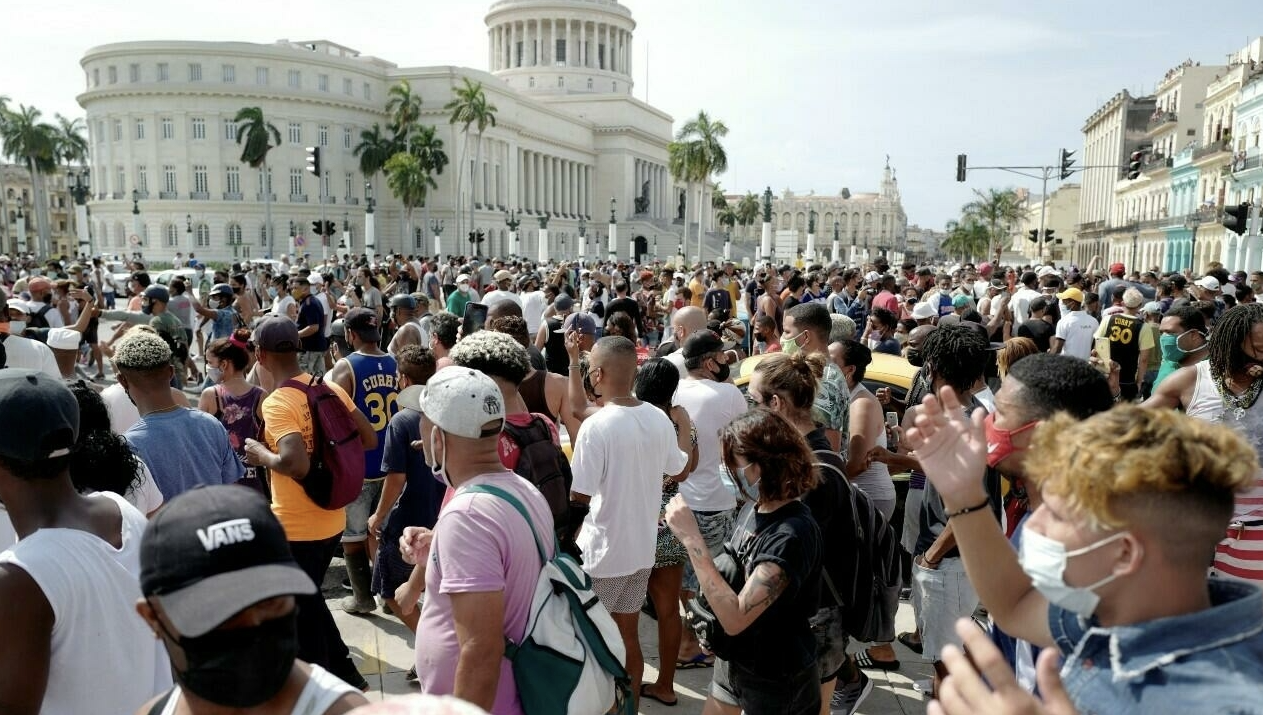
July 11th protests signal a heroic rebellion and commitment to freedom
STRATEGIC REGIONAL AUTHORITIES (SRA)
Aware of the fragility of political succession, Raúl Castro appointed three of his trusted generals in full control of the SRA. These powerful commands are specifically framed in Cuba’s communist Constitution (Art.101, Law No. 75) National Defense Council. It provides total control over the Armed Forces, the Communist Party and all government ministerial bureaucracy. The generals in charge of the three territorial armies, Eastern, Central and Western are subordinated to the SRA. In control of these Strategic Regional Authorities are: General Ramón Espinosa (Eastern Region); General Joaquín Quintas Solá (Central Region); and General Leopoldo Cintras Frías (Western Region- Retiring). These generals are highly trusted in the military power structure.
THE INNER CIRCLE OF POWER. (MINI-BIOGRAPHIES)
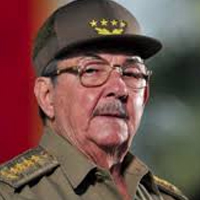
General Raul Castro (92)
Power behind the scenes.
Raúl Castro is a militant communist, dogmatic intolerant, obedient to his brother’s command, an accomplished manager, dutifully clannish and fully committed to the Armed Forces control of a totalitarian State.
He served as Minister of the Armed Forces for 48 years (1959-2008) and was the First Secretary of the Communist Party of Cuba, in the one-party communist State from 2011 to 2021. In April 2021 Raul Castro, retired from his government duties in the Cuban government. (Actually he is semi-retired providing decisive inputs in relevance issues). Raul Castro continues to have a seat at the National Assembly, representing Santiago de Cuba.
In his formative years, Raul Castro traveled to Vienna (four months before the Moncada’s fiasco in 1953) to attend the Moscow sponsored World Youth Conference. Afterwards, he went to Budapest, Prague and Bucharest. He liked what he saw. During this trip he established a long-lasting friendship with Nikolai Leonov, a KGB espionage officer that later turned out to be a useful link with the Kremlin. Raúl recalled that from that moment on “he was ready to die for the Communist cause.” Declassified KGB documents offer evidence that Fidel Castro deliberately made a Marxist of Raul.”
At 22, back in Cuba, Raúl joined the Cuban Communist Party Youth Branch (CCP). Later while in Mexico, Raúl struck up a close ideological friendship with Ernesto “Che” Guevara and forged a commitment to create a Marxist society in Cuba. In 1963, Raúl was the official link between Fidel and Nikita Khrushchev to deploy nuclear missiles in Cuba.
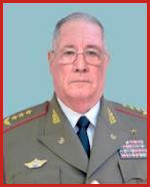
Army Corp General
Alvaro Lopez Miera (80)
MINISTER of the MINFAR.
Lopez Miera is a veteran of the African campaigns. He attended the Soviet Frunze military Academy for general staff officers. Lopez Miera is very close to Raul Castro and the Vilma Espin family. While in Angola he forged friendship bonds with Generals Ramon Espinosa and Joaquin Quinta Solas. He is perceived as a capable military leader. A communist hard liner, with a devotion to preserve Fidel Castro’s revolutionary legacy.

Russian Defense Minister, Sergei Shoigu reaffirming Cuba’s support of Russia’s invasion of Ukraine.
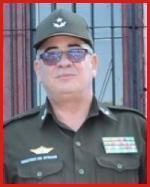
Division General
Lazaro Alvares Casas (58)
Minister of the Interior
Álvarez Casas joined the Armed Forces in his early 20s and worked in several military tasks including Counterintelligence Chief. He served in Angola and graduated from the “Máximo Gomez” Academy. He is the nephew of the late General Julio Casas, founder of GAESA. General Álvarez Casas was sanctioned by the U.S. Department of the Treasury’s Office of Foreign Assets based on the Global Magnitsky Human Rights Act on January 15, 2021. He is among the most intolerant and violent members of the military dictatorship.
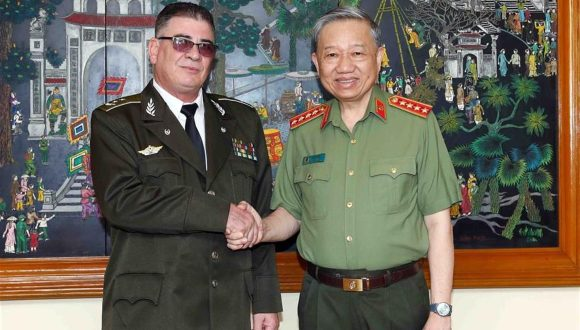
General Lázaro Álvarez Casas, meet in Hanói with Vietnam Security Minister General To Lam. (May 16,2023).

Army Corps General Ramón Espinosa (83)
Deputy Minister of the MINFAR
Former Chief of the Eastern Army.
Member of the Communist Party Politburo.
Chief of the Eastern Strategic Regions.
Joined the Rebel Army in the Escambray Mountains in Central Cuba (Las Villas). Veteran of The African Campaigns generation. A front line military leader, he was severely wounded in Angola. In that fierce fight, Joaguin Quintas Sola was among the team that fought and rescued Espinosa:
Highly rewarded by Raul Castro as a reliable military commander, Espinoza was later sent to the Soviet General Staff Voroshilov Academy. He is one of the ranking generals in the military Inner Circle of Power, providing input in the selection of the succession leadership of the youngest generation.

Army Corp General
Joaquín Quintas Solá (79)
Vice Minister of the MINFAR
Chief of the Central Strategic Region
Quintas Sola joined Raúl Castro’s guerrillas (1958) in the Sierra Cristal. In May 1976, he replaced the wounded General Ramon Espinosa as Chief of the Cabinda front in Angola. From 1987-2008 was Chief of the Revolutionary Armed Forces (FAR) Central Army. He travels frequently to Caracas Venezuela where he is in close collaboration with the Venezuelan Generals. Quintas Sola projects a low public profile and is fully committed to the selection of the younger generations to power. He is a member of the Central Committee of the Communist Party.
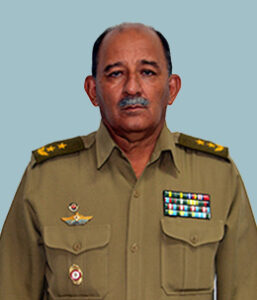
Division General Roberto Legra Sotolongo (69)
MINFAR Deputy Minister and Chief of Staff.
General Sotolongo is a remarkable case of a humble soldier who was raised by self-discipline, determination and toughness to the rank of Vice Minister of the MINFAR and Chief of staff of the Cuban Armed Forces. By the end of 1987, was deployed to Angola where he served in various armed brigades in combat. Back in Cuba Legra Sotolongo served as chief of an Armed Division and was later appointed as Director of the “Maximo Gomez” Military Academy for MINFAR. On August 19, 2021 General Legra Sotolongo was sanctioned by the U.S. government charged under the Global Magnitsky Human Rights Act. He is close to General Alvaro Lopez Miera, an influential member of the Armed Forces Inner Circle of Power.
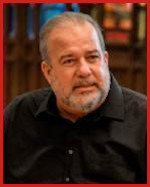
Manuel Marrero Cruz (60)
Prime Minister. Head of the Cuban Government
Manuel Marrero is an architectural engineer and a retired MININT couterintelligence colonel. He began working in 1990 with Generals Rodriguez López Callejas and Peraz Rospide, in the newly created GAVIOTA. From 2004 to 2019, Marrero was Minister of Tourism, becoming the most senior member of the Council of Ministers. Actually he was present when Fidel Castro presided over the Council’s meetings. Marrero had over 20 years of experience in tourism and bureaucracy management. On December 21, 2019, Marrero was appointed Prime Minister and Head of the Cuban government
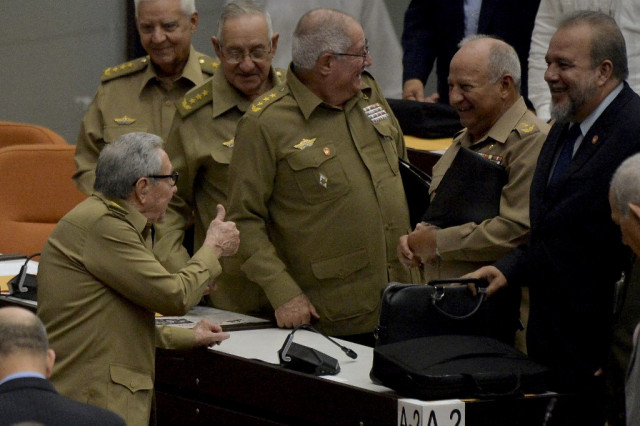
Raul Castro and the top ranking generals celebrating Manuel Marrero's appointing as Prime Minister
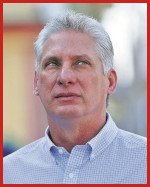
Miguel Diaz Canel ( 63)
President of the State and First Secretary of the Communist Party.
A civil engineer, he was hand picked by Raul Castro to hold the position of ceremonial presidency. Diaz Canel is an experienced survival member of the bureaucracy nomenclature always in tune with protecting the military clannish power’s privilege.In response to the July 2021 massive opposition protest demonstrations, voicing the frustration with the failure of the communist system and demanding individual freedoms, Diaz Canel stated:”We are ready for anything and we’ll be in the street fighting”.
The Minister of Interior Lazaro Alvarez Casas unleashed the repressive forces’ vicious brutality and the military oligarchy discharged their immense propaganda machine (intensely active in Miami) to control the protest demonstration narrative. Diaz Canel is a young ceremonial face of a dysfunctional marxist regime desperately seeking financial credits and institutional legitimacy.

Division General
Leonardo Andollo (79)
Executive Chief of the Cuban Army General Staff.
General Andollo holds a PhD in Military Science and is a logistic expert. He is active in several financial enterprises, including GAESA and supervised with the Venezuela’s military the transshipment of drugs from the Colombian suppliers to the distributor’s Cartels. He frequently travels to Caracas where for years has become the Operational link with the Venezuelan military.
Andollo is a veteran of the Africa’s Campaign. He attended the Voroshilov Military Academy (1974-1976) for training as a tactical engineer. He is the Executive Chief of the Permanent Commission for the implementation of the Economic Model in Cuba and advisor to the Mariel Special Zone. Andollo is a prominent member of Cuba’s inner circle of power.
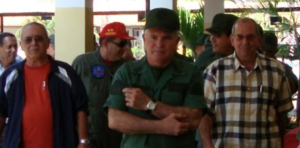 General Division Leonardo Andollo Valdés (red t-shirt) with
General Division Leonardo Andollo Valdés (red t-shirt) with
Cuban officers in the Maiquetia airport (Venezuela)

General Jose Amado Guerra (71)
Secretariat Council of Ministery
In 1978, he served in Africa (Ethiopia). Back in Cuba, he was assigned to the Staff of the Chief in the Eastern Army. Guerra worked for several years under the Command of General Julio Casas while he was building GAESA, and later was transferred to the inner circle of General of the Army Raúl Castro. Today, General Amado Guerra is among the best-connected officers of the Armed Forces and GAESA.

Colonel Homero Acosta (62)
SECRETARIAT COUNCIL OF STATE
Acosta was appointed in August 2009 to this position. He holds a Master’s degree in Public Law. He began his career in the Revolutionary Armed Forces Military Tribunals. Colonel Acosta arrived at his current position as a reliable executive to Raúl Castro in the Secretariat of the Ministry of the Revolutionary Armed Forces.
According to reports, Acosta is organized and efficient. He took part in the negotiations to reestablish diplomatic relations with the United States and worked on the final draft of the 2019 communist Constitution. He is also close to Alejandro Castro.
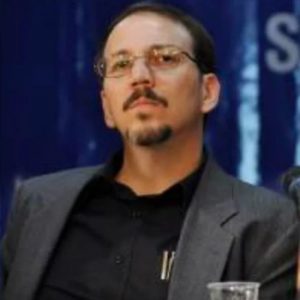
Colonel Alejandro Castro Espin (59)
Chief of MINFAR – MININT Intelligent Coordination
He is Raul Castro and Vilma Espin son and brother to Deborah, Mariela y Nilsa. Alejandro Castro is an engineer, has a Master degree in International Relations and a PhD in Political Science. He wrote a highly critical book against the U.S. titled “The Terror Empire ” and is fully committed to The Marxist-Leninist ideology. Alejandro served in the African campaigns, he did not fight at the front line, but suffered an accidental injury to an eye. He is a prominent figure in Cuba’s power structure, and has close personal relations with Vladimir Putin and other Russian government officials.
He participated with his father in arranging the visits of Pope Francisco and President Barack Obama to Cuba. His name was mentioned as the lead perpetrator of the sonic attacks on the U.S. and Canadian diplomats in Havana. He keeps a low political profile in the mist of Cuba’s economic catastrophe. Lacking charisma, he remains active within the Inner-Circle of Power as Intelligence Coordinator of MINFAR and MININT. A Powerful assignment.

Division General Luis Perez Rospise (79)
President of Grupo de Turismo Gaviota
As President of Gaviota, General Perez Rospide managed around 5S
tourist hotels, (four and five stars) with over 25,000 rooms, and a labor force of more than 28,000 employees, mostly veterans from the Armed Forces .Born in Guantanamo, Perez Rospide at age 15, joined Raul Castro guerrilla in the Sierra Cristal and became, throughout the years, a trusted member of his close and reliable circle of officers.
In 1964, Raul Castro sent Perez Rospide to study “Army Mechanical Engineer” in the Soviet Union. He also fought in the African campaigns and in 1988 Raul Castro appointed him as director of the “Unión de Empresas Militares” (UEM) in charge of weapons maintenance. The UEM was at the time the largest military’s industrial complex of about 230 factories.
In 1992-1993 during the devastating end of the Soviet Union’s disintegration and cancellation of the supremely important financial subsidy, Raul Castro appointed Perez Rospide as director of Gaviota tourism group. The most important and profitable Armed Forces enterprise that provided a good quality of life to retired and active MINFAR and MININT officers.
At present General Luis Perez Rospide is an experienced administrator and a vital component of the ad-hoc group from GAESA, transitioning to the appointment of Rodriguez Callejas permanent substitute as President of the Military controlled gigantic enterprise (GAESA).
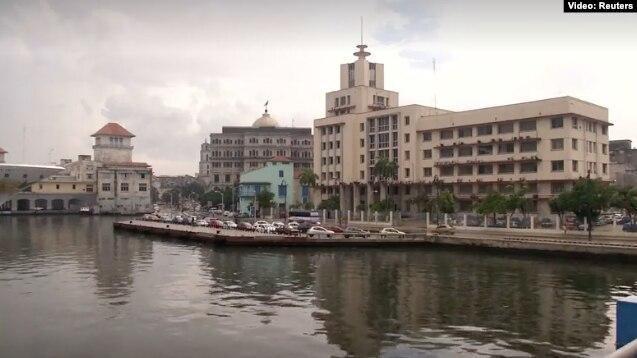
GAESA Headquarters
GAESA – ECONOMY’S LEADERSHIP
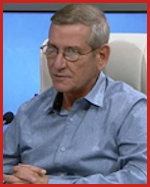
Colonel Héctor Oroza Basutín
President of Cuban Export-Import Corporation (CIMEX)
Oroza Basutín directs over 70 commercial bussiness, 20 corporations, and controls a huge financial operation, including over 2800 retail outlets and more than 70 enterprises located in foreign countries. All CIMEX business transactions are in U.S. dollars or European euros. In 2012, CIMEX became a subsidiary of GAESA. Colonel Basutín belongs to Cuba’s financial elite.
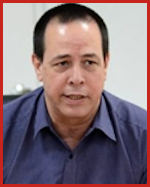
Dr. José Ángel Portal Miranda. (57)
Public Health Minister
Dr. José Ángel Portal is a Specialist in Comprehensive General Medicine. He was named as Public Health Minister in December, 2018. He has been a member of the Communist Party of Cuba since 1995. He holds the medal “Distinguished Service” of the FAR.
He coordinates with GAESA the multi-million dollar earnings assigned to the program of Cuban medical doctors and nurses, in several countries throughout the world. A program which has been denounced on international forums as a modern form of slavery due to the fact that the Cuban government collects 80% of the medical personnel’s salaries.

Ricardo Cabrisas Ruiz (85)
Minister of International Commerce
Ambassador to Japan (1971-1973), Vice Minister of Foreign Trade (1973-1980), Minister of Foreign Trade (1980-2016),
Minister of Economic and Planning (2016-2022), Minister of Foreign Trade (2022-2023)
Ricardo Cabrisas is a veteran in debts restructuring negotiations and agreements. He has close
diplomatic ties with Russia and China Financial leadership. Cabrisas is facing Cuba’s struggling
economy.
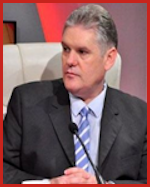
Alejandro Gil Fernández (63)
Economy Minister and Deputy Prime Minister
Alejandro Gil Fernández was born in 1964. He was appointed on July 21, 2018 as Economy and Planning Minister. On December 21, 2019, he was designated Deputy Prime Minister.
He studied Transportation Operations at the Technological University, and has a Master in Finance at University of Havana. He was Director of Grupo Caudal, a financial entity dedicated to consulting, and advisory services. He is dealing with Cuba’ collapsing economy.
Gil is enduring a most difficult agenda. Before the COVID 19 pandemic, Cuba was dealing with a national infrastructure catastrophe and the worst economic crisis since the collapse of the Soviet Union.

Juan Carlos Garcia (59 )
MINISTER OF TOURISM
An efficient and low profile bureaucrat from the ranks of GAESA. Garcia Granda was appointed Minister of Tourism in December, 2019. During 2020 and 2021, García Granda participated in numerous international forums in an effort to promote Cuba’s tourism impacted by the Covid 19 pandemic and travel restrictions. He works closely with Prime Minister Manuel Marrero. The impact of Covid 19 was catastrophic for the tourism industry. Tourist in the first semester of 2021, fell from 986,673 to 141,316 (86%) compared to the same period the prior year.
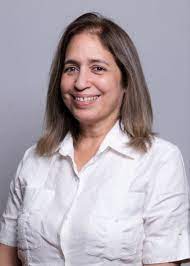
Senior Colonel Ania Lastres Morera.(56)
GAESA Vice President.
MININT Colonel Ania Lastres Morera was appointed interim President of GAESA, after the sudden death of Luis Alberto Rodriguez Lopez Callejas. In 2019 she became a member of the National Assembly.
In 1984 Ania Lastres began working under the mentorship of General Julio Casas Regueiro as specialist in business management and economics. By 1995 she became assistant to Luis Alberto Rodriguez Lopez Callejas in GAESA. She has experience in international real estate investment, shipping traffic and financial service.
MILITARY LEADERSHIP
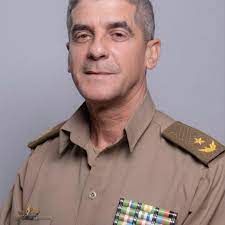
General de Brigada Ernesto Feijoo Elro
Chief Western Army (57)
Graduated from the “Camilo Cienfuegos” Military Academy in Santiago de Cuba and from the “Antonio Maceo Academia Interarmas” Brigadier General Feijoo is also a Deputy of Cuba’s National Assembly. He has received several military awards. The powerful Armored Division “Rescate de Sanguily” is deployed in General Feijoo’s Western Army.

Division General
Andrés González Brito (69)
Chief Central Army
General González Brito was 6 years old when the Rebel Army entered Havana. In 1969, he joined the Academy “Camilo Cienfuegos” and graduated in 1974 as a junior officer. González Brito led various military tasks, including Chief of the Tank Regiment UM 2376 and Chief of the Military Region “Ciudad de la Habana”.
He is a dogmatic communist hard liner and was sanctioned by the U.S. government in August 19,2021, under Executive Order 13818 which builds upon and implements the Global Magnitsky Human Rights Accountability Act for human right violations.
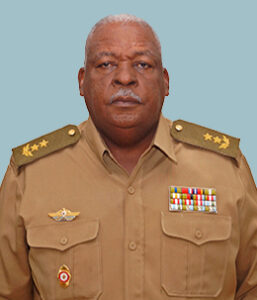
Division General
Ricardo Rigel Tejeda (59)
Chief Eastern Army
General Rigel Tejeda was born near “La Gran Piedra”, in the “Sierra Maestra” Mountains, close to Santiago de Cuba. In 1983 he joined the “Jose Maceo” Military Academy, upon graduation he was assigned to an infantry and later as a tank battalion officer. In 1987, Rigel Tejeda was deployed in the Angola Campaigns. Back in Cuba he was sent to the “Maximo Gomez” officers Academy. In November 2016, Rigel Tejeda was promoted to Brigadier General. In 2021 was promoted to Division General and Chief of the Eastern Army.
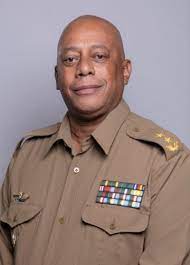
Division General Jose Gomez del Vallin (63)
Chief of the Military Counterintelligence (MINFAR).
Graduated from the Superior Military School “Comandante Arides Estévez Sánchez”, an elite spycraft academy (now Military University of Legal Sciences) as a counterintelligence officer. In 2017 Gomez del Vallin replaced Vice Admiral Julio César Gandarilla in the Directorate of Military Counterintelligence of the MINFAR. He is leading the cruel repression of the dissident activists in Cuba.
SIGNIFICANT PERSONNEL
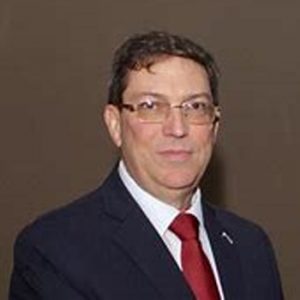
Bruno Rodríguez Parrilla (65)
Foreign Affairs Minister
A survivor of several political purges, he is an attorney and served in Angola on the internationalist missions as a junior officer in the FAR. At the University of Havana, he was among the leaders of the F.E.U (Federación Estudiantil Universitaria) and he was the director of Juventud Rebelde Newspaper. From 1995-2003, he was the Cuban Ambassador to the United Nations. Rodriguez Parrilla was appointed Minister of Foreign Affairs in 2009. His health is an issue of concern.
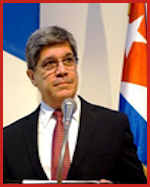
Carlos Fernández de Cossío (64)
Director of the U.S. Department, Ministry of Foreign Affairs (MINREX)
In 1984, he began working for the MINREX. From 1994-1999, Cossio was director of the North America Department. In 1994, he was appointed Ambassador in Canada. From 2005 to 2013, Fernández de Cossio was active in various diplomatic and administrative assignments. From 2013 to 2017, he was Cuba’s Ambassador to South Africa. Fernández de Cossio is among the most influential Cuban diplomats in analyzing and implementing Cuba’s policy toward the U.S.

Walter Baluja García (56)
Minister of Higher Education
Former Rector of the University of Informatics Sciences (UCI) he was promoted to his current position on July 9, 2021. He is a leading voice in the cyber strategies to control the flow of internet information.
He has been involved in the implementation of the “ciberclarias”, an army of young cyber specialists that infiltrate social media through false profiles, promote messages supporting the Cuban military regime, discredit opposition and independent activists, and disseminate communist propaganda and disinformation.
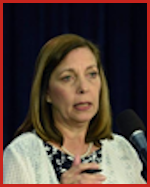
Josefina Vidal Ferreiro (63)
Deputy Minister of Foreign Affairs
Josefina Vidal Ferreiro was born in Santiago de Cuba. She graduated from the Moscow State Institute of International Relations in 1984 with a Bachelor degree. From 1991 to 1997, she was an analyst at the Cuban Embassy in Paris, France. From 1999 to 2003, she was First Secretary at the Cuban Interest Section in Washington D.C.
Vidal Ferreiro was among the highest Cuban Diplomats arranging President Obama’s visit to Cuba. From March 2018 to September 2021 Vidal was Cuba’s Ambassador to Canada. She has a relevant level of influence in Cuban politics to the US.
THE COMMUNIST PARTY HARD-LINERS

Salvador Valdés Mesa (79)
Vice President of Cuba
He has occupied several positions in the CTC ( Workers Union of Cuba) and in the Communist Party. He was Minister of Labor between 1995 to 1998 and Secretary General of the National Trade Union of Agricultural Workers (Sindicato de Trabajadores Agropecuarios). He is an influential member of the comunist regime.
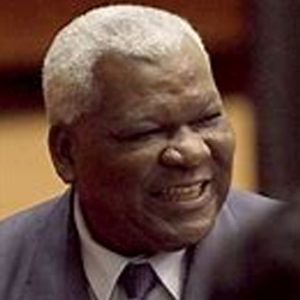
Esteban Lazo Hernández (80)
President of the National Assembly of the People’s Power and State Council
He is among the few ranking African descendant individuals in the communist government. A member of Raúl Castro’s inner circle, Esteban Lazo is close to General Álvaro López Miera, and Alejandro Castro. He is a prominent figure in Cuba’s nomenclature.

Gladys Bejerano Portela (76)
Comptroller General of Cuba
Bejerano Portela is the Comptroller General of Cuba since 2009. She is the auditor who oversees the financial reports, such as balance sheets and income statements, of all the State organizations. . She follows the lead of Colonel Alejandro Castro, the Coordinator of intelligence of the MINFAR and MININT. They never notify in advance when they will do an audit. GAESA and the military enterprises are out of the reach of the Comptroller General.
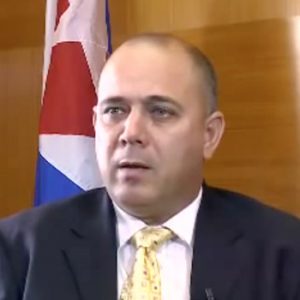
Roberto Tomás Morales Ojeda (56)
Secretary of Organization and Militancy of the Communist Party.
Appointed to his present position on April 20, 2021.Graduated from Medical School. In 2006, he was designated First Secretary of the Communist Party in Cienfuegos. In July 2010, Morales Ojeda became Minister of Public Health. His ties with GAESA continue to be essential in connection with the huge revenues of the International Medical program. He is a dogmatic Marxist-Leninist hardliner.
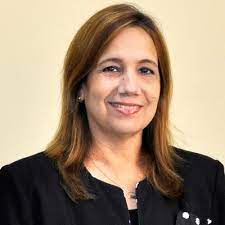
Ana Maria (Mary) Machado (60)
Vice President of the National Assembly
Member of the Central Committee of the Communist Party of Cuba
Mary Machado is an attorney that displayed discipline and allegiance to her judicial responsibilities. In 2000 was assigned as a Judge in the Santa Clara Provincial Court. In 2009 was selected to Cuba’s Supreme Court. In 2011 joined the Central Committee of the Communist Party. In 2012 became Vice President of Cuba’s National assembly. Mary Machado has a Master degree in Public Administration.
| Army Corps General Álvaro López Miera (79) Minister of the FAR He is the son of a Marxist exiled in Santiago de Cuba after the Spanish Civil War. López Miera is a veteran of guerrilla struggles in Cuba and of war in Africa. Through the years, he developed a close bond with Raúl Castro and Vilma Espin’s family. López Miera is the top ranking General in the Armed Forces. The U.S government based on the Global Magnitsky Human Rights Act sanctioned General López Miera in connection with the brutal repression of the peaceful pro-democratic protest that began on July 116. Ideologically, López Miera is a Marxist-Leninist hard liner with a narrow cultural insight. |
GAESA | Division General Luis Alberto Rodríguez López Callejas (61) President of GAESA In a remarkable concentration of power, Luis Alberto Rodríguez López Callejas, is the President of GAESA, Division General (MINFAR), member of the Politburo and the National Assembly. (October 23rd, 2021). He is becoming the powerful authority of the military oligarchy. GAESA is a gigantic conglomerate of State and mixed enterprises that manages the legal and illegal financial deals of the Cuban Government (a highly secret operation), including a distribution partnership with the Colombian and Venezuelan drug cartels. He is the son of General Guillermo Rodríguez, and father of Lieutenant Colonel Raúl Guillermo Rodríguez Castro (Raúl Castro’s grandson and head of his bodyguards). Division General Rodríguez López Callejas is the Tzar of the Cuban Economy. On September 30th, 2020, he was sanctioned by the U.S. Department of the Treasury’s Office of Foreign Assets Control (OFAC)7. |
| Division General Lázaro Álvarez Casas (57) Minister of the Interior (MININT) Álvarez Casas joined the Armed Forces in his early 20s and worked in several military tasks including Counterintelligence Chief. He served in Angola and graduated from the “Máximo Gomez” Academy. He is the nephew of the late General Julio Casas, founder of GAESA. General Álvarez Casas was sanctioned by the U.S. Department of the Treasury’s Office of Foreign Assets based on the Global Magnitsky Human Rights Act on January 15, 20218. He is among the most intolerant and violent members of the military dictatorship. |
DOMINANT MILITARY OLIGARCHY
|
|
Army Corps General Ramón Espinosa (82) First MINFAR Deputy Minister, Chief of the Eastern Strategic Regional Authority (SRA) Espinosa joined the Rebel Army in the Escambray Mountains. Veteran of the African campaigns, he graduated from the Soviet Voroshilov Academy. Espinosa is close to General López Miera and Quintas Solá. For 27 years (1982-2009), he was head of the Territorial Eastern Army and was appointed First Deputy Minister in 2021. |
|
|
Army Corps General Joaquín Quintas Solá (83) Second MINFAR Deputy Minister; Chief of the Central Strategic Regional Authority (SRA) Born in Santiago de Cuba, he joined Frank Pais9 in clandestine operations. In 1958, General Quintas Solá became part of Raúl Castro’s guerilla in Sierra Cristal. Veteran of the African campaigns, he traveled frequently to Venezuela, where he worked closely with general Leonardo Andollo. Quintas Solá graduated from the Soviet Voroshilov Academy and has close links with the Generals López Miera and Espinosa. |
|
|
Division General Roberto Legrá Sotolongo (66) Armed Forces Chief of General Staff – MINFAR General Legrá Sotolongo is a veteran of Africa’s campaigns. In Angola, he was Chief of the Lubango Tactical Group. He had held several relevant commands including Chief of Staff of the Western Army. Legrá Sotolongo was sanctioned by the U.S. government based on the Global Magnitsky Human Rights Act on August 19, 2021.10 Legrá Sotolongo is an influential member of the inner circle of power. |
|
|
Colonel Alejandro Castro Espín (57) Intelligence Coordinator of the Armed Forces Son of Raúl Castro and Vilma Espín Alejandro Castro is a prominent figure in Cuba’s power structure. He has close personal relations with the Kremlin, including Vladimir Putin. His name surfaced as the lead perpetrator of the sonic attacks to the U.S and Canadian diplomats in Havana. He is keeping a low profile in the ongoing political and economic debacle. Lacking charisma, he remains very active as intelligence coordinator of MINFAR and MININT. |
|
|
Manuel Marrero Cruz (56) Prime Minister. Head of the Cuban Government Manuel Marrero is an architectural engineer. He began working in 1990 with General Pérez Róspide and Rodríguez López Callejas, in the newly created Gaviota. From 2004 to 2019, Marrero was Minister of Tourism. On December 21, 2019, Marrero was appointed Prime Minister of the Cuban government. He remains close to Luis Alberto Rodríguez López Callejas |
|
|
Miguel Díaz Canel (60) President of the Cuban Government A civil engineer, he was minister of Higher Education from 2009 to 2012. Díaz Canel lacks a solid foothold in the military oligarchy’s structure. He is a dull communicator, facing mounting dissident protests and economic collapse. Diaz Canel is the President of a dysfunctional communist system, seeking legitimacy to the failed Marxist Constitution and government. He holds a powerless presidency. |
|
|
Brigadier General José Amado Guerra (67) Executive Secretary, Council of Ministers In 1978, he served in Africa (Ethiopia). Back in Cuba, he was assigned to the Staff of the Chief in the Eastern Army. Guerra worked for several years under the Command of General Julio Casas while he was building GAESA, and later was transferred to the inner circle of General of the Army Raúl Castro. Today, General Amado Guerra is among the best-connected officers of the Armed Forces and GAESA. |
MILITARY COMMANDERS MINFAR –MININT
|
|
Division General Raúl Acosta Gregorich (70) Western Territorial Army Chief General Acosta joined the FAR in 1967. In 1970, he graduated from the Soviet Voroshilov Military Academy. In 1977, Acosta was deployed to Angola as Chief of Staff in an Artillery Regiment. During his military career, he served as Chief of Staff in the Western Army. The armorer Division “Rescate de Sanguily” is under his command. In 2016, Venezuelan opposition voices denounced the presence in Fuerte Tiuna of 60 military operatives commanded by Acosta Gregorich.11 |
|
|
Division General Andrés González Brito (67) Chief Central Territorial Army General González Brito was 6 years old when the Rebel Army entered Havana. In 1969, he joined the Academy “Camilo Cienfuegos” and graduated in 1974 as a junior officer. González Brito led various military tasks, including Chief of the Tank Regiment UM 2376 and Chief of the Military Region “Ciudad de la Habana”. He is a dogmatic hard liner and was sanctioned by the U.S. government under Executive Order 13818 which builds upon and implements the Global Magnitsky Human Rights Accountability Act for human right violations on August 19, 202112. |
|
|
Brigadier General Oscar Callejas Valcárcel National Revolutionary Police Chief (PNR/MININT) For years, General Callejas was the First Deputy Chief of the Directorate of the PNR. He assumed command at the beginning of 2021 after the dismissal of Brigadier General Jesús Becerra Morciego. On July 30th, 2021, he was sanctioned by the U.S. government for human rights violations under Executive Order 13818 which builds upon and implements the Global Magnitsky Human Rights Accountability Act.13 |
|
|
Division General José Gómez del Vallín Military Counterintelligence Chief (MINFAR) Graduated from the Superior Military School “Comandante Arides Estévez Sánchez”, an elite spycraft academy (now Military University of Legal Sciences) as a counterintelligence officer. He replaced Vice Admiral Julio César Gandarilla in the Directorate of Military Counterintelligence of FAR’s in 2017. He is leading the surveillance and repression of the dissident activists. |
|
|
Brigadier General Jesús M. Burón Tabit Vice Minister (MININT) Brigadier General Jesús M. Burón Tabit is another member of the military who was transferred from MINFAR to MININT, in the field of counterintelligence. In 2015, he chaired the Ministerial Examination Commission of the “Arides Estevez” Higher Military School. In 2020, he received the Olo Pantoja Medal Award granted by MININT. Buron Tabit is an experienced intelligence officer. |
|
|
Brigadier General Norge F. Enrich Pons Counterintelligence Chief (MININT) Graduated from the Superior Military School “Comandante Arides Estévez Sánchez”, an elite spy craft academy (now Military University of Legal Sciences). The Counterintelligence Directorate of MININT is in charge of internal security, including surveillance and repression against the growing dissidence movement, and counterespionage of the diplomatic service. |
|
|
Lieutenant Colonel Francisco Estrada Portales Criminal Investigation Section Chief (MININT) He is a leading officer in the repression against dissidents. He directed the MININT Investigation of the acoustic attacks to the U.S. and Canadian embassies. Estrada Portales is among the most feared interrogators in the dreaded “Villa Marista”’ State Security detention center. He led the MININT reprisal against Movimiento San Isidro’s dissidents and was directly involved in the brutal repression of the July 11, 2021, freedom march in Cuba. |
MINISTRY OF THE INTERIOR (MININT)
The Ministry of the Interior (MININT) was founded on June 6, 1961. At present time its numerical strength is 20,000 operatives and 6,500 border guards [estimated].
They were trained by the East German Stassi and the Soviet KGB. Castro was swift in constructing a totalitarian police state. The MININT officers were thoroughly trained in internal surveillance, recruitment of informer’s for infiltration as spies in resistance groups, and painful interrogation techniques. Some units were schooled as elite fighting forces. The KGB and Stassi taught MININT’s Dirección General de Inteligencia (DGI), presently known as Dirección de Inteligencia (DI), the full range of espionage tradecraft. The DGI became good spying agents, ranking with the Israelis among the best small nations’ intelligence in the world.
The MININT controls the intelligence and counterintelligence services, the National Revolutionary Police (PNR), the Special National Brigade (Boinas Negras), the Coast Guard, the Prison Services and the Committee for the Defense of Revolution (CDR).
The MININT objectives are to watch, incarcerate, torture and often murder the political opposition activists and leaders. MININT’s most successful operation was the recruiting of Ana Belen Montes, a senior Pentagon analyst with top secret clearance. She spied for over fifteen years providing detailed information on vital U.S. classified military data to communist Cuba. She was arrested on September, 2001 and sentenced to 25 years in prison.
During the 62 years of dictatorship, the MININT has led a brutal repression by applying violence, arrests, beatings, and extrajudicial executions. The MININT Special Forces “Boinas Negras” were sanctioned by the U.S Government for their ferocious violations of Cuban dissidents’ human rights during and after the July 11’s peaceful marches.14
China is heavily providing Cyber Technology upgrading and Cuba’s personnel training for internet misinformation, vigilance and control over social media.
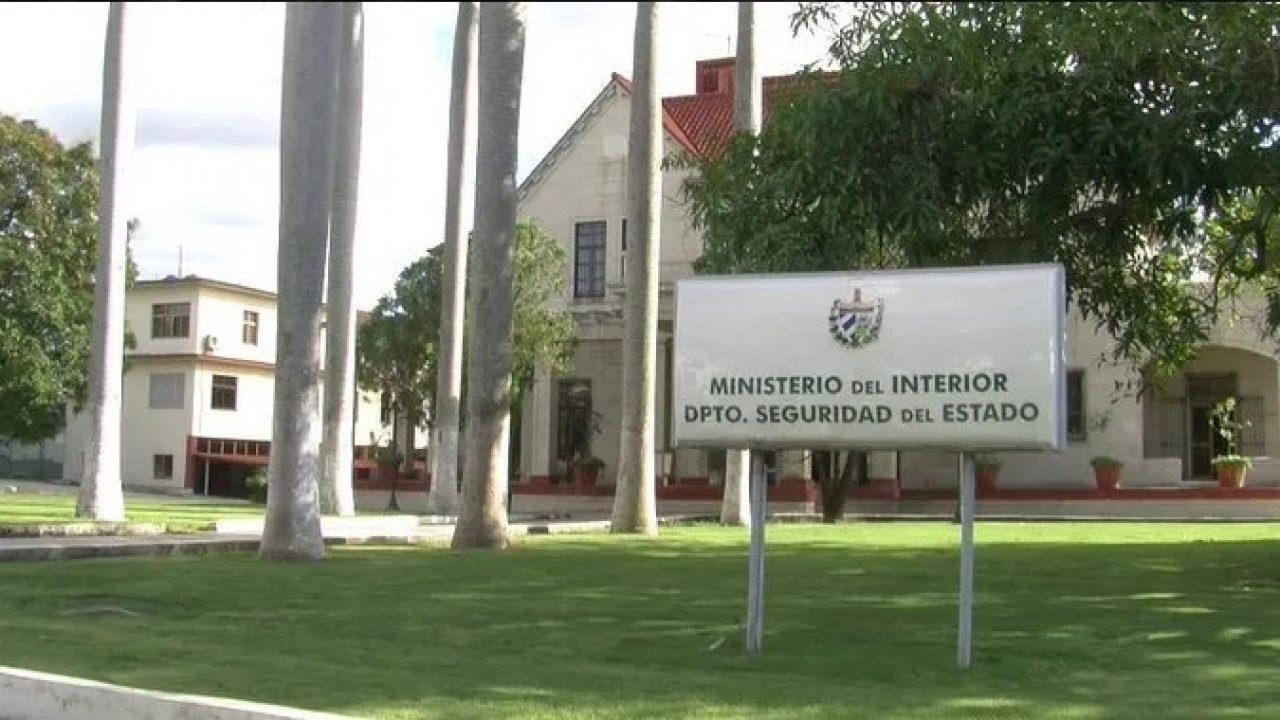
The fearsome headquarters
of State Security in Havana (MININT),
known as Villa Marista, where political opponents are
detained, interrogated and tortured.
CUBAN GENERALS IN VENEZUELA
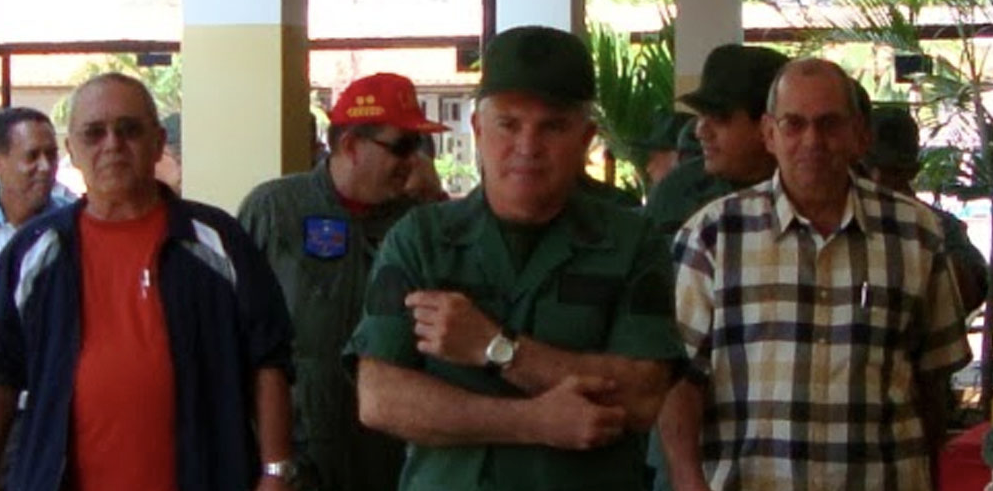
General Andollo (red t-shirt) with Cuban officers in the Maiquetia airport (Venezuela)
|
|
General Division Leonardo Andollo Valdés (78) Coordinator of the Group of the Revolutionary Armed Forces of Cuba in Venezuela (GRUCE) Leonardo Andollo is a veteran of the African’s campaigns, where he became a military logistic expert. Andollo established a close relationship with Venezuelan military “Cartel de los Soles”. He frequently travels to Caracas where he coordinates the transshipments of drugs from Colombia to the U.S. via secured areas in Central America and to the European Union countries mostly via Northern Africa. Andollo is an influential member of Cuba’s inner circle of power. He is close to the GAESA financial operations. |
|
|
División General Ermio Hernández Rodríguez (78) Chief of Operation of the Group of the Revolutionary Armed Forces of Cuba in Venezuela (GRUCE) Veteran of Ethiopia and Angola. He graduated from the Soviet military Academy as a Tank Tactical Expert. He fought in the Cuito-Cuanavale battle against the South African Army. He operates in Caracas from Fort Tiuna, commanding the Cuban elite forces deployed in Venezuela. |
THE ARMED FORCES CAPABILITIES15
There are 38,000 active military personnel and 30,000 reserved troops integrated into 14 infantry brigades.
Due to the economic collapse the military capability has been reduced by a massive budget cut. The budget priority is firmly for internal vigilance and repression.
Russia gives modest military support mostly for aging military equipment.
STRATEGIC REGIONAL AUTHORITIES.
There are three powerful Strategic Regional Authorities (SRA), established by the National Defense Council.
Western. Army Corp General Leopoldo Cintas Frías (retiring)
Central. Army Corp. general Joaquín Quintas Solá
Eastern. Army Corp General Ramón Espinosa
THE THREE TERRITORIAL ARMIES
Western Army. Division General Raúl Acosta Gregorich (70)
Central Army. Division General Andrés González Brito (67)
Eastern Army. Vacant
ARMY FORCES BY ROLE
ARMORED DIVISION:
The “Rescate de Sanguily” tank division is integrated in three brigades of forty-two tanks each. Total 126 battle tanks.
MIXED MECH 2 Brigades | AIRBORNE 1 Brigades | LIGHT INFANTRY 2 Brigades | SPECIAL FORCES 3 Regiments |
ARMORED VEHICLES INVENTORY:
Main Battle tanks: 900 E (T34-T54-T55-T62)
Armored Personnel Carrier: 500E
Assault Batteries.: 60E (Caliber 100 mm)
ARTILLERY INVENTORY:
Towed: 500E (Calibers: 122mm | 130mm | 152mm)
Multiple Rocket Launchers: 175E (Calibers: 122 mm | 140mm)
Self-Propelled: 40E (Calibers: 100mm | 120mm)
Mortars: 1000E (Calibers: 82mm | 120mm)
Much of the aviation fleet is reported to be in storage. The Navy has a minimum capability with 6 OSA II Fast Patrol Boats with missile launchers, 2 “Rio Damuji” vessels with missiles and a small helicopter landing platform. The Navy active personnel is 3000E officers and sailors.
FREE ACCESS TO INTERNET IS AN STRATEGIC PRIORITY
China has a major role in providing Cuba with modern cyber technological expertise to control people’s access to the internet. Since the massive protests of July 11, 2021, China’s intervention has been a major factor in the internet restrictions and blackouts. China’s ties with Cuba in the communications technology sector and especially in the so-called “digital authoritarianism” have been revealed by the international press.16.
On July 21, 2021, Senator Bob Menendez published a report on China’s digital authoritarianism. “As this report lays out, China is seeking to exploit new and emerging technologies to cultivate digital authoritarianism along multiple paths and is utilizing its entire policy toolkit, including political, economic, diplomatic, and coercive means, to shape the digital domain in its desired image.”17
On the issue of China’s technological expertise in internet censorship, shamelessly displayed in Hong Kong’s internet repression, Senator Marcos Rubio was direct and to the point. He stated in one twitter post, “They use a system made, sold, and installed by China to control and block access to the internet in Cuba”.18
Growing internet development offers extraordinary opportunities to communicate ideas without state’s control. “This has made the digital world into a form of new frontier and outlet for dissenting views, especially valuable to activists living under some of the world’s most authoritarian regimes”19.
It seems that the July 11 massive mobilization of protesters was galvanized by social media. The Cuban military response is to stifle and control the internet networks.

Image of the massive protests
where thousands of Cubans marched throughout the
Island during July 2021, demanding freedom. (El País)
GAESA (GRUPO DE ADMINISTRACIÓN EMPRESARIAL S.A.)
GAESA is a gigantic military-controlled umbrella enterprise that began operations under the direction of General Julio Casas Regueiro (deceased), a powerful member of Raúl Castro’s inner circle from Sierra Cristal’s guerrilla. General Casas was Luis Alberto Rodríguez López Callejas’ financial management mentor. He is in control of every money-making operation in Cuba including GAVIOTA and CIMEX enterprises.
GAVIOTA: It operates most of the tourist hotel chains with over 35 K rooms throughout the island, in partnership with several international corporations including Spain’s Melia, Sheraton’s Starwood and the Swiss-based Kaminski.
CIMEX: It manages over 2,800 retail outlets, comprising the Panamericana Stores, fast food restaurants and gas stations, commercial enterprises, jewelry stores, construction and real states companies, clothing, appliances and tours operations.
GAESA controls the Cuban (legal and illegal) economy and employs thousands of retired military personnel.
During 2020, GAESA took over all the hotels, stores and eateries in colonial old Havana, previously operated by Habaguanex, an entity administered by the City historian’s office.
All remittances, international medical revenues and illegal drugs related financial operations are tightly controlled by GAESA. When combined, they are Cuba’s largest money-making operation.
This huge military enterprise does not disclose financial records. GAESA revenues are top-secret. Luis Alberto Rodríguez López Callejas, Álvaro López Miera, Raúl Castro, and a few selected individuals, have access to GAESA’s multi billion financial records. 
GAESA Headquarters in Havana
GAESA – ECONOMY’S LEADERSHIP
|
|
División General Luis Pérez Róspide (78) Pérez Róspide is a veteran of Africa’s campaigns. He was trained and tutored by General Julio Casas Regueiro. He graduated in Military Mechanical Engineering, specializing in Armored Technique from the Soviet Military Academy. In 1988, he was assigned as Director of the Union of Military Industry. Pérez Róspide was a key player in the concept of MINFAR’s “Perfeccionamiento Empresarial”. At the beginning of the nineties, he was appointed as president of Gaviota, the most important and profitable of the GAESA military’s enterprises. Pérez Róspide is a trusted member of Rodríguez Lopez Calleja’s inner circle of power. |
|
|
Colonel Héctor Oroza Basutín President of Cuban Export-Import Corporation (CIMEX) Oroza Basutín directs 73 commercial subsidiaries, 21 corporations, and controls a huge financial operation, including over 2800 retail outlets and 73 enterprises located in foreign countries. All CIMEX business transactions are in U.S. dollars or European euros. In 2012, CIMEX became a subsidiary of GAESA. Colonel Basutín belongs to Cuba’s financial elite. |
|
|
Rodrigo Malmierca (65) Minister of Foreign Trade and Investment He is the son of former Cuban Foreign Minister Isidoro Malmierca Peoli, one of the founders of State Security. Rodrigo graduated in Economics from the University of Havana in 1980. He worked from 1982 to 1992 in the Department of International Economic Institution. From 2002 to 2005, Malmierca served as Ambassador to Belgium, and the European Union. In 2009, General Raúl Castro appointed Malmierca as Foreign Trade and Investment Minister. He is a Marxist-Leninist hard liner. |
|
|
Juan Carlos García Granda (57) An efficient and low profile bureaucrat from the ranks of GAESA. Garcia Granda was appointed Minister of Tourism in December, 2019. During 2020 and 2021, García Granda participated in numerous international forums in an effort to promote Cuba’s tourism impacted by the Covid 19 pandemic and travel restrictions. He works closely with Prime Minister Manuel Marrero. The impact of Covid 19 was catastrophic for the tourism industry. Visitors in the first semester of 2021, felled from 986,673 to 141,316 (86%) compared to the same period the prior year.20 |
|
|
Dr. José Ángel Portal Miranda (54) Public Health Minister Dr. José Ángel Portal is a Specialist in Comprehensive General Medicine. He was named as Public Health Minister in December, 2018. He has been a member of the Communist Party of Cuba since 1995. He holds the medal “Distinguished Service” of the FAR. He coordinates with GAESA the multi-million dollar earnings assigned to the program of Cuban medical doctors and nurses, in several countries throughout the world. A program which has been denounced on international forums as a modern form of slavery due to the fact that the Cuban government collects 80% of the medical personnel’s salaries. |
|
|
Alejandro Gil Fernández (57) Economy Minister and Deputy Prime Minister Alejandro Gil Fernández was born in 1964. He was appointed on July 21, 2018 as Economy and Planning Minister. On December 21, 2019, he was designated Deputy Prime Minister. He studied Engineering in Transportation Operations at the Technological University, and he is a Master in Finance at University of Havana. He was Director of Grupo Caudal, a financial entity dedicated to consulting, and advisory services. Gil is enduring a most difficult agenda. Before the COVID 19 pandemic, Cuba was dealing with a national infrastructure catastrophe and the worst economic crisis since the collapse of the Soviet Union. |
THE COMMUNIST PARTY HARD-LINNERS
|
|
Esteban Lazo Hernández (78) President of the National Assembly of the People’s Power and State Council He is among the few ranking African descendant individuals in the communist government. A member of Raúl Castro’s inner circle, Esteban Lazo is close to General Álvaro López Miera, Luis Alberto Rodríguez López Callejas and Alejandro Castro. He is a prominent figure in Cuba’s “nomenklatura”.21 |
|
|
Salvador Valdés Mesa (76) Vice President of Cuba He has occupied several positions in the CTC (Central of Workers of Cuba) and in the Communist Party. He was Minister of Labor between 1995 to 1998. He was Secretary General of the National Trade Union of Agricultural Workers (Sindicato de Trabajadores Agropecuarios). He is an influential member of the regime. |
|
|
Roberto Tomás Morales Ojeda (54) Secretary of Organization and Militancy of the Communist Party. Appointed to his present position on April 20, 2021.Graduated from Medical School. In 2006, he was designated First Secretary of the Communist Party in Cienfuegos. In July 2010, Morales Ojeda became Minister of Public Health. His ties with GAESA continue to be essential in connection with the huge revenues of the International Medical program. He is a dogmatic Marxist-Leninist hardliner. |
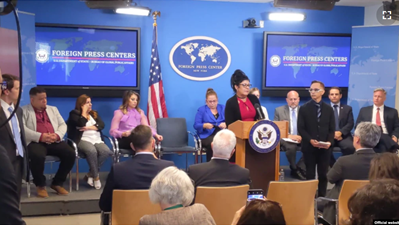
Cuban doctors denounce the conditions of modern slavery that they suffer when participating in Cuban government international programs in which they are paid 20% of their salaries, and Cuban regime keeps 80%. This program is among the main sources of revenue of the Cuban military oligarchy. (Radio y Television Marti)
|
|
Gladys Bejerano Portela (74) Comptroller General of Cuba Bejerano Portela is the Comptroller General of Cuba since 2009. She is the auditor of accounting and oversees the financial reports, such as balance sheets and income statements, of all the State organisms with the exception of Luis Alberto Rodriguez’s GAESA that has never made a public financial statement. She is a tough controller who follows the lead of Colonel Alejandro Castro, Coordinator of intelligence of the MINFAR and MININT. They never notify in advance when they will do an audit. GAESA and the military enterprises are out of the reach of the Comptroller General. |
|
|
Inés María Chapman Waugh (53) Deputy Prime Minister Graduated in Hydraulic Engineering. She was president of the National Institute of Hydraulic Resources. On 19 December 2019 was promoted to the position of Deputy Prime Minister of the Republic of Cuba. She worked in Holguin as Deputy Director of the Empresa de Aprovechamiento Hidráulico. Maria Chapman is gaining influence within the bureaucracy’s nomenklatura. |
|
|
Rogelio Polanco Fuentes Chief of the Ideological Department of the Communist Party Rogelio Polanco studied International Political Relations at ISRI. He was a member of the National Bureau of Communist Youth (UJC). He was Director of “Juventud Rebelde” Newspaper (1997-2009) and Ambassador to Venezuela from 2009-2019. While in Venezuela, he was closely linked to General Leonardo Andollo and Ermio Hernández. He was awarded the “Francisco de Miranda” Order. As Chief of the Ideological Department of the Communist Party, he is a leading dogmatic voice in social media. He is fully committed to the Marxist-Leninist hard line. |
SIGNIFICANT PERSONNEL
|
|
Bruno Rodríguez Parrilla (63) Foreign Affairs Minister A survivor of several political purges, he is an attorney and served in Angola on the internationalist missions as a junior officer in the FAR. At the University of Havana, he was among the leaders of the F.E.U (Federación Estudiantil Universitaria) and he was the director of Juventud Rebelde Newspaper. From 1995-2003, he was the Cuban Ambassador to the United Nations. Rodriguez Parrilla was appointed Minister of Foreign Affairs in 2009. His health is an issue of concern. |
|
|
Josefina Vidal Ferreiro (60) Vice Minister of Foreign Affairs. (MINREX) Josefina Vidal Ferreiro was born in Santiago de Cuba. She graduated from the Moscow State Institute of International Relations in 1984 with a Bachelor degree. From 1991 to 1997, she was an analyst at the Cuban Embassy in Paris, France. From 1999 to 2003, she was First Secretary at the Cuban Interest Section in Washington D.C. Vidal Ferreiro was among the highest Cuban Diplomats arranging President Obama’s visit to Cuba. From March 2018 to September 2021 Vidal was Cuba’s Ambassador to Canada. She has a relevant level of influence in Cuban politics to the US. |
|
|
Carlos Fernánadez de Cossío (61) Director of the U.S. Department, Ministry of Foreign Affairs (MINREX) In 1984, he began working for the MINREX. From 1994-1999, Cossío was director of the North America Department. In 1994, he was appointed Ambassador in Canada. From 2005 to 2013, Fernández de Cossío was active in various diplomatic and administrative assignments. From 2013 to 2017, he was Cuba’s Ambassador to South Africa. Fernández de Cossío is among the most influential Cuban diplomats in analyzing and implementing Cuba’s policy toward the U.S. |
|
|
Colonel Homero Acosta Secretary of the Council of State Acosta was appointed in August 2009 to this position. He holds a Master’s degree in Public Law. He began his career in the Revolutionary Armed Forces Military Tribunals. Colonel Acosta arrived at his current position because of his closeness to Raúl Castro in the Secretariat of the Ministry of the Revolutionary Armed Forces as a judicial advisor. According to reports, Acosta is very organized and efficient. He took part in the negotiations to reestablish diplomatic relations with the United States. Acosta worked on the final draft of the 2019 communist Constitution. He is also close to Alejandro Castro. |
|
|
Walter Baluja García First Vice Minister of Superior Education Walter Baluja was Rector of the University of Informatics Sciences (UCI) before his was promoted to his current position on July 9, 2021. He is a leading voice in the cyber strategies to control the flow of internet information. He has been involved in the implementation of the “ciberclarias”, an army of young cyber specialists that infiltrate social media through false profiles, promote messages supporting the Cuban military regime, discredit opposition and independent activists, and disseminate communist propaganda and disinformation. |
CONCLUSIONS
General Luis Alberto Rodríguez López Callejas, has achieved a huge amount of power as MINFAR Division General, President of GAESA, member of the Politburo and the National Assembly. He is becoming a powerful authority of the Military Oligarchy.
The present socio-economic crisis is the worst Cuba has faced. The progressive collapse of Cuba national infrastructure has reached the level of a historical catastrophe.
The massive protests of July 11th, 2021, mark a turning point in Cuban’s reality. People are demanding freedom and change on the streets and the world has witnessed this massive claim for the first time.
Free access to the internet in Cuba must be an strategic priority for Cuban exile, because it constitutes a valuable tool for Cubans to receive information and communicate among themselves inside the island.
NEXT STEPS FOR THE CCSS
The Cuba Center for Strategic Studies will continue working on essential issues about Cuba’s present and future. The new studies we are right now conducting are focused on different fields of interest.
Political protest in the territory of the obscene: Cuba and Russia, two case studies.
The Role of the Judiciary System after Communism in Cuba.
Power of the Word: Keys to the Language of Domination in Cuba.
Secrecy, Repression and Disinformation: the Three Pillars of the Cuban Totalitarian System.
Cuba’s Economic Infrastructure Breakdown.
CONCLUSIONS
The succession process in Cuba has fallen into a dangerous vacuum due to the sudden death of GAESA President, Luis Alberto Rodriguez Lopez-Callejas. The brotherhood that generals of the generation forged in the Sierra Maestra during the fight against Batista and Africa’s campaigns are not present in the upcoming military generation. The link that would have united political power with the economic hegemony of the military once Raul Castro is dead, disappeared. For the first time in the history of Castro’s totalitarian regime, the power vacuum, the economic crisis, the growing popular discontent and personal ambitions have generated the option of conflicts among the younger officers.
The Cuban economy is barely surviving through the remittances, drug trafficking, money laundering and medical international subsidies that are not restricted by the U.S. embargo.
Meanwhile, future events will continue to take us by surprise like the July 11, 2021’s massive pacific protest marches of a young generation raised in the grip of a shattered economy, alienated from the decrepit discourse of Communism. Every day of their lives, the angry younger Cubans have to face the ruins brought about by Fidel Castro’s failed revolution. Without faith in the Marxist doctrine, these courageous Cubans lived in the shadows of hopelessness and a volcanic rebellion. They are the protagonist of a real change in Cuba toward political and economic freedom.
Bibliographies:
1- Mark Falcof “Cuba, the morning after” (Washington D.C.: The AEL Press)103
2- Raul Castro, quote in “Cuba en el Mes” (April 1995), 44
3- Irving Horowitz “Cuban Communism”, (Cambridge University 1987 – 2001) p. 403
1 oligarchy, government by the few, especially despotic power exercised by a small and privileged group for corrupt or selfish purposes. https://www.britannica.com/topic/oligarchy
2 Roig, Pedro. “Death of a Dream: History of Cuba, Elusive Quest for Freedom”, Institute for Cuban and Cuban American Studies, Miami. P.338
3 Ibidem.
4 Roig, Pedro. Op.Cit. P. 339.
5 Ibidem
6 Declaration of Secretary Antony J. Blinken, July 22nd, 2021, based on Executive Order 13818 on the implementation of Global Magnitsky Human Rights Act. https://www.state.gov/sanctioning-cuban-security-forces-in-response-to-violent-repression-of-protests/?utm_medium=email&utm_source=govdelivery
7 https://www.govinfo.gov/content/pkg/FR-2020-10-05/pdf/2020-21933.pdf
8 https://home.treasury.gov/news/press-releases/sm1237
9 Frank País was the national coordinator of Movimiento 26 de julio in Cuba. He was assassinated by Batista’s political police on July 30th, 1957.
10 https://www.state.gov/sanctioning-cuban-officials-in-response-to-violence-against-peaceful-protestors-2/
11 https://apuedge.com/in-age-of-terror-why-is-obama-rushing-to-open-daily-flights-with-cuba/
12 https://www.state.gov/sanctioning-cuban-officials-in-response-to-violence-against-peaceful-protestors-2/
13 https://www.state.gov/sanctioning-cuban-police-in-response-to-violent-repression-of-peaceful-protests/
14 https://www.state.gov/sanctioning-cuban-police-in-response-to-violent-repression-of-peaceful-protests/
15 The Military Balance 2020, The International Institute for Strategic Studies, P. 415-417.
16 https://www.newsweek.com/china-behind-cuba-protests-censored-beijing-linked-1608771
17 https://www.foreign.senate.gov/press/ranking/release/ranking-member-menendez-publishes-new-minority-report-the-new-big-brother_china-and-digital-authoritarianism-
18 Senator Marco Rubio’s Twitter: https://twitter.com/marcorubio/status/1414435986281467907
19 “Internet Censorship”, Students for Liberty’s article. https://studentsforliberty.org/north-america/blog/freedom-of-expression/internet-censorship/
20 The Miami Herald, September 22nd, 2021
21 Nomenklatura: a select list or class of people from which appointees for top-level government positions are drawn, especially from a Communist Party. https://www.dictionary.com/browse/nomenklatura
Download PDF version here
